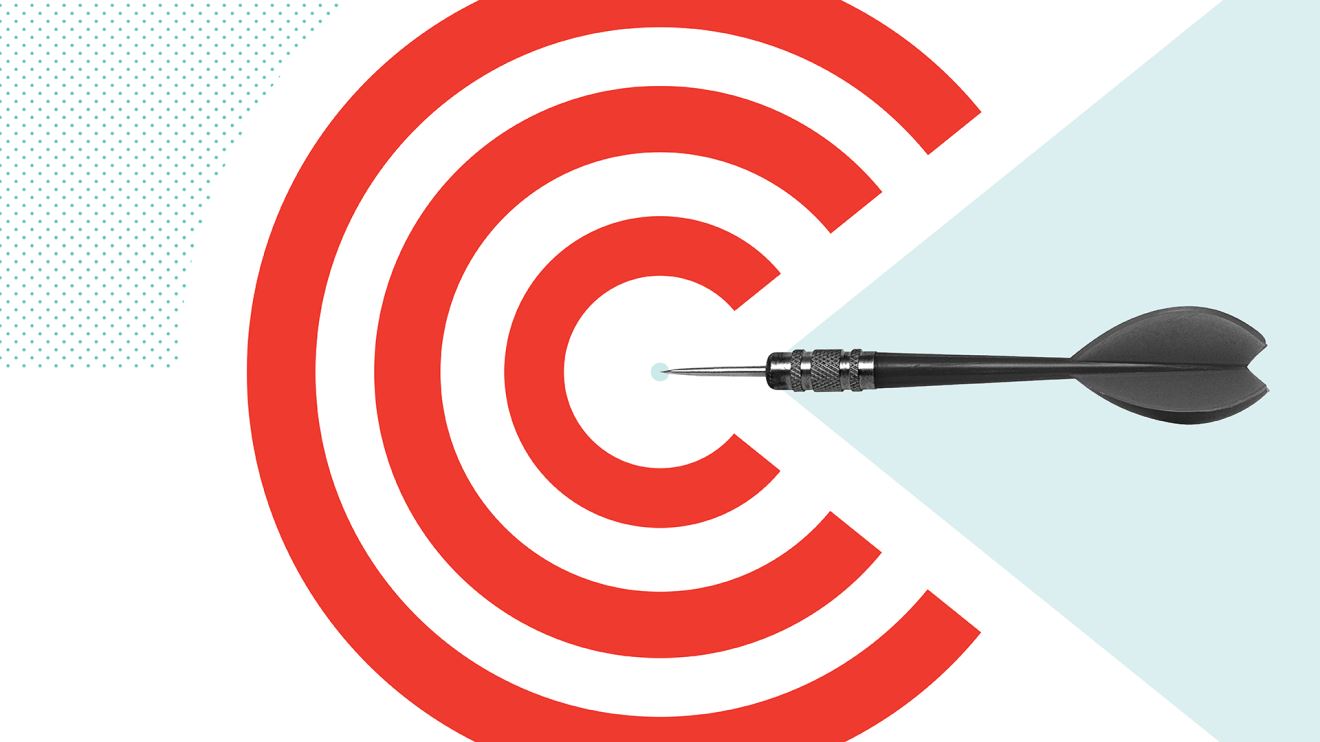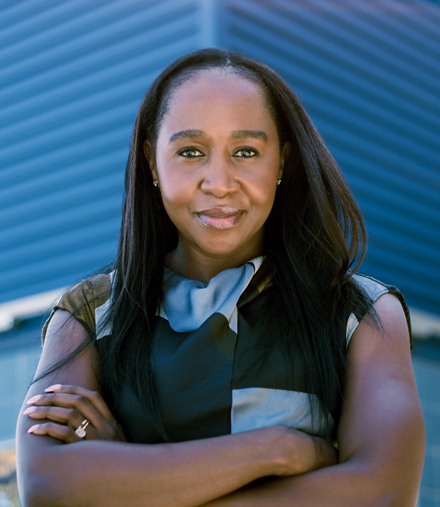What is Brand Strategy?
We talk all the time about crafting a strategy for your brand, but what does that actually look like? In this episode we'll break down why it's important for your brand and overall business, and touch on a few key points about how to build a strong brand strategy.
Episode Outline
- What is Brand Strategy?
- Brand Strategy vs. Corporate Strategy
- Why Brand Strategy is Important
- Components of a Brand Strategy
- How to Build a Brand Strategy
- Brands that Have Mastered Brand Strategy
- Advice for Planning a Brand Strategy
What is Brand Strategy?
Chris Wilks: So brand strategy is something we specialize in here at BrandExtract, and it's something we work on every day. Let's start by maybe giving a definition of brand strategy to listeners that may not be as familiar with the term as we are. Can any of you explain what brand strategy is in layman's terms?
Charity Ndisengei: Sure. So a lot of people come to us and they will say they want to talk about a brand strategy. And sometimes they come to us with a perception that it's all of the tangible of things like your logo, the term, the design and the symbol itself. But it actually isn't.
Brand strategy is really a deliberate approach. It's a long-term plan designed at really achieving the goals that pertain to the recognition of your brand. So it's really about the softer stuff: How do we want customers to actually perceive our brand? And how do we move that needle over a period of time?
Bo Bothe: And I think that one of the challenges, to Charity's point, is that very deliberately thinking about how you want your customer to feel about you. And that needs to align with corporate strategy. We want to sell the best product on the market or the most innovative thing or whatever it is. That's one thing.
To Charity's point, that is a component of a brand, the product itself and how it performs. But how they feel about it at the end of the day, that makes you buy more of that stuff at higher prices for longer periods of time.
A brand strategy could start with "I want someone to think this product changes the world or is easy to use" and then building off of that. Sometimes our clients and many people just don't think about that goal. They feel it, they kind of talk about it, but they're not deliberate in their strategy to get people thinking that and believing that.
Charity: They're really about defining your customer needs, the emotions, and the competitive environment where you're going to play.
Cynthia Stipeche: And it's definitely not a marketing plan, which is a completely different animal. Could be confused, I think, by some to think that well, we've got a marketing plan in place, but that is not a brand strategy. Completely different.
Brand Strategy vs. Corporate Strategy
Chris: So can we maybe distinguish between a business strategy or a corporate strategy and a brand strategy? What are some of maybe the key differences between those two? Because I think sometimes they get conflated.
Bo: Sure. To start, I think that's a challenge even for us because those two things bump up against each other. But your corporate strategy is really:
- "I'm going to make this product at these prices this way and we want to get this kind of revenue out of that product."
- "I expect to make it this efficiently."
- "I expect our people to do it this way,"
That last one starts to bump into a little bit of integrated branding, which is your mission, vision, values, and those kinds of things. Then there's that translation into:
- "How do we want all of these stakeholders to feel about the product?"
- "What do we want them to believe about the product?"
Those things need to mesh.
I mean, at the end of the day, we talk about this all the time, half the reason we created BrandExtract was because we had people coming to us all the time saying we want to be fast. Then we'd go study them, and we're like, you're not fast. Your market needs fast, but that's an operational problem.
Well, that then turns into corporate strategy. How are we going to deliver on this thing? And then there's what do we want people to believe about our product based on all of that? And those two things lining up are critical, but they're not the same thing.
And a brand could be so big in, say, a consumer company, that it might be an arm of their overall corporate strategy, but we kind of pull it out and put it as the base underneath, almost like the filter that the whole corporate strategy goes to get to marketing plans and tactics and the way we answer the phone and how we deliver on the website and all that other stuff.
But I mean, that's at least kind of what I've seen, Charity and Cynthia, as we've been doing this for the last 20 years, is that there's always that confusion. And sometimes when we do a brand study, you bounce right up against management consulting.
This product may not be priced. It may not be packaged the right way. Your sales team may not be able to sell it, and you may need to replace your sales team. Those kinds of things happen, and that is a little bit of a confusion when we're doing a brand assessment and coming up with a brand strategy.
Sometimes our clients aren't nearly as clear on even those things about their product or about their delivery or about their operation. And we have to have that almost management consulting conversation, but we can't implement that. We can't study everything that McKinsey can.
Chris: Yeah. And one of the things that stands out to me is it seems like a corporate strategy is more kind of the nuts and bolts of the organization as to where the brand strategy is more, like you guys talked about, that emotional aspect or the feeling or the relationships that we want to would build with our customers and that sort of thing.
Cynthia: The brand should be engaging with customers, and the strategy should be built out in such a way that there should be a sense of pushing them towards engagement and empowerment. When they're engaging with the brand, they're believers in the brand.
So that's really what we're trying to get to with the brand strategy, which is beyond the corporate strategies, beyond the numbers, beyond the number of units sold. It's like we're really trying to integrate it with the day-to-day emotion and psychological makeup of consumers.
So like everything else we said, it's beyond just the logo. If you look at brands with big memorable logos, it's like, I'm past the logo part. Now the minute I think about this company or the brand, I have a feeling inside of me of what I'm about to encounter with or why I pull these brands into my life and lifestyle. So it's much deeper.
Why Brand Strategy is Important
Chris: So would you say that a brand strategy is critical to the success of an organization? And if so, why? Why is it critical to the success of an organization?
Charity: I think from a long-term perspective it's absolutely critical. So again, it's about paying back to that whole thing of if you think of, say, Colgate, a brand name. If you think of toothpaste, what's the first brand that comes to mind? For me it's Colgate. It might something else for you. And that's based around an emotion.
If you don't have an emotional relationship with a product, then it's easy to swap out. So for the long-term success of a brand, it's imperative that you build a connection with an audience. And that's the whole job of brand strategy, building long-term relationships with customers so that you can ensure the longevity of your product or service and it's not just another one that can be replaced.
Bo: Well, and I think the key term there is long-term. I think two things build a brand: money or time. The challenge with building a brand quickly with money is then over time, you have to deliver, as opposed to a brand that is very deliberate over time, delivering on its promises that eventually becomes known for the Colgate or the Crest or the Kleenex or the whatever.
I think Charity kind of hits on a really good point there, which is that long-term value. And companies that really don't care about the long-term value of their entity or their product really, their brand strategy should be sell as much as fast as they can and just make sure it looks cool, right?
I mean, there are things that are meant to have a very short shelf life, that aren't really... Like pet rocks, boom. Go buy the pet rock. Nobody cares about the value of the pet rock past the fad, right?
And so I think, on its most extreme, that's what it is, right? Whereas with an Apple or a Starbucks or any other long-lasting brand, the perception of that brand is built, torn down, built up again, adjusted and molded over time. And the more deliberate you are at that from the beginning, the easier it'll be to hit the target. And I think Charity kind of hit it on that.
Two things build a brand, money or time. You could be known right away, but are you known for the thing that the customer wants? And when that doesn't happen right, it could really, really affect you.
That's one of the things that, when we look at a customer journey or the journey of a key stakeholder, it's one of the things Cynthia really starts to uncover a lot in the branding work we do, is that path that customer has to go through, not just what we put them through but what they have to go through to trust you to a point where they'll pay a premium for your product and trust it.
Cynthia: Absolutely. And that's something we try to do with all of the branding projects and brand strategy engagements that we're involved with, is like beyond just understanding corporate strategy, the business goals, goals for the brand, is we dig into that target audience and try to understand where they're coming from.
We want to understand their challenges, their pain points, things that are going to resonate with them, and we dig in deeper to figure out where we can really get them to engage with the brand during different phases of the journey, of their customer journey.
Chris: Yeah. So it seems to me as if like the why it's critical, why brand strategy is critical to success is that, going back to what Charity said, it's kind of a defensive against commoditization, right? If you're just another brand of toothpaste you're replaceable, but if you have a great brand then there's that emotion that makes you want to keep buying for the long-term.
Charity: I think it also goes back to that whole conversation of the role of brands these days. I mean, brands, depending on price point and the role within society, sometimes rely greatly on shortcutting a message. If I am an Apple person, for instance, what does that say about me versus someone who's an Android person?
So a lot of labeling of yourself with brand as well and deliberately building that brand association with that badging term over the long term. Because customers are using brands to badge or to tell whether something is of quality or not.
Bo: I mean, what we're talking about with the commoditization of things, I think that's brought this to the forefront. Where consumer brands constantly had to worry about this to stay relevant because there were always competitive brands coming up, B2B brands, everything becomes commoditized. Because of innovation and partially because of speed and quality that makes it easier to make a better quality product today than it was 20, 30 years ago.
Cynthia: Yeah.
Bo: But the world's gotten so small. So where you thought there were only one toothpaste, now there are 50 and they come from all over the world and they're all different flavors and they're all different kinds. What is it, since they're all priced relatively the same... And if it's not price, right, I mean, if I want to pay a dollar for a tube or three dollars for a tube, that's different, right?
All the three-dollar tubes, because I feel that it makes my mouth feel better and cleaner and fresher, what differentiates you? It's all paste in a tube with some flavoring. So at what point... It then becomes I've always used Crest. I trust Crest. I tried Colgate one time or I tried Sensodyne one time and it tasted awful. Or I tried something and I don't like it. I'm always going back to Crest.
And that is a purely emotional decision. Why am I going to pay $6 for a case of Ozarka water that I can get out of the tap and it's just fine or $3 for a case of Sam's Club water? How much do I value the quality and taste of my water? Because it's all commoditized, because I have so many different options, that all of a sudden really being deliberate about who my audience is, who I'm talking to, what the value drivers are for them, understanding what matters to them, and selling to that audience as opposed to trying to sell your water to everybody is critical.
Cynthia: I love that. I think you need to know who you are, right? And part of that, the discovery of like what we do and we work with our clients is we help them better understand who they are from a branding perspective. But then when you have that understanding and you better understand your target and what you're going for, then you can start to determine, well, we're not selling to everyone but we are focusing on this type of buyer, this type of audience. So yeah.
Components of a Brand Strategy
Chris:
Awesome. So let's talk a little bit about the components of a brand strategy. So are there any artifacts that come from a brand strategy? Is there anything that if you undertake a brand strategy process for example, that you're going to come out with, whether it's tangible or intangible?
Bo: There's a series of these branding books by Neumeier that are great, and in one of the books, there's a thing called an "onlyness statement" that I've always loved. "My product is the only blank that does blank," and you have to fill in those blanks.
I think in its simplest form, whether we're doing a brand pyramid for a client to kind of come up with the essence and the position and the kind of key top two or three words that matter or adjectives that matter or whether you're doing something like that. My widget is the only widget that does blank. It's the only thing that makes this person happy or whatever. Understanding that is the beginning. It's not really a brand element, but it's that key component.
Charity: The functional benefit of the brand.
Bo: Right. I mean, what is it I want this product to do for my customer, beyond be fast or be cool, right? Cool for some brands is part of the deal. But then there's all the stuff that integrates with it. Your mission, vision, values. How you're going to deliver the product when it comes to service.
There are those components. There are the associations. What do I want people to feel, think, and do whenever they interact with my brand? I mean, you can see that in Starbucks. It used to be the third place, right? And now it's just about food. I mean, it's really just the drive-through. The chairs have become less comfortable. They're smaller, they're harder. The locations are smaller. The drive-throughs are bigger. They've definitely shifted their brand strategy from being the third place to the place I get high quality, expensive coffee fast. That's all deliberate.
So there are these elements to brand strategy that are how I want my product to be perceived, but then there's how are we architecting the brand products? How are we putting them all together so that you can understand how they all work together if there are multiple products?
Then there are the things you guys talked about, the brand elements and the brand conveyors, the logo and the identity and the things that express, that represent the brand when words don't matter, when words can't be expressed.
Cynthia: And I think you get to that state though with some of these high level brands. When you see the Apple logo on the computer, you see it, you know exactly what it is. I don't need anything else. I know exactly what that is.
Which is interesting because as humans we recognize colors and things like warnings. So I think there's some of that at work too in our brains. We see something and you automatically recognize it as a feeling, the thing that you want or want to run away from, whichever. But that's really what we're aiming for is to make it that easy to recognize.
Bo: Yeah. So I think as far as elements of a brand strategy, Chris, there's:
- The deliberate decision about what your position is in the marketplace
- What your customers or key stakeholders need from the brand
- What you expect them to get from the brand
- How you're going to deliver on the brand
- How you're going to train your people to deliver on the brand
And then at the end, there's all that stuff that you make that represents you, whether it's a campaign or it's an element, a color, to Cynthia's point, or a word or a headline or a sound. All of those things go into, over time, building up that archive of things.
From the words you say and the things you want people to believe in your intention to the actual manifestation of the brand, that's all part of a brand strategy. Whether it's brand architecture or other things like that, that's all components of that, that let somebody understand how they should interact with the brand and how they should believe in it or see it functionally and emotionally.
Chris: Yeah. To me, one way to think about it, and I think one of you guys mentioned it whenever we were talking about this previously, was that a brand strategy functions, when it's done properly, it functions as kind of like your roadmap or your North Star.
It helps you kind of determine how you should respond in a crisis situation, how you should provide customer service, how you should do X, Y or Z. I mean, I think that's one of the real values of a brand strategy.
How to Build a Brand Strategy
Chris: So when you're developing a brand strategy, what are some of the factors that you should consider? Who should you consult? Do you need to talk internal, external? Or you talk just to leadership? I mean, what are some of the considerations to take into account when you're developing that brand strategy?
Charity: Well, certainly the way that we approach it is that it is a multi-pronged approach. You want to determine where you want to take this organization to start off with, so it's imperative that you have conversations with the leadership of the organization. It's imperative that you have conversations with the people that work for the organization.
But it's also very key that you are clear in what your customer is looking for, what their perception is of the existing brand, if it's an existing brand. And then you try and find what the sweet spot is between the two of them and marry those two. And that's really where you define your emotional, functional, and consumer benefits as part of the strategy.
So it's both internally and externally. And then you need to look at what the competitor landscape looks like. Is there a place that you can stand out as a brand and actually make a dent within that competitive market? I think those are the main core things that you have to consider.
Brands that Have Mastered Brand Strategy
Chris: Are there any examples or brands out there that you think really have their strategy nailed down, that they really know what they're doing, they're very rarely kind of bested, I guess, in their industry?
Bo: Over time, those things change. The reliability of the experience and the usability of Apple has started to diminish because Apple is more of a fashion statement now than it was in the past. It used to be kind of a little alternative brand.
One that's near and dear to my heart, and it's partially because of how I grew up and where I grew up, was Southwest Airlines. The no frills airline. They have positioned themselves in that, but they also position themselves with fun and the whole love thing. And it's a super casual kind of experience.
Whereas somebody else would prefer what used to be Continental or Delta United, which is a little bit of a more formal experience. Both are big brands, but Southwest has stayed pretty true to itself and it's kind of fun-loving nature. And that works for me. Other people don't like the cattle car, but at the end of the day they know their brand.
Cynthia: They know their traveler.
Bo: Yep. And they're not cheap. They're not the cheap airline anymore, but there's not a whole lot of hassle. You get bags, you do your thing, you get on the plane, and there's not a whole lot of upgrading and all that kind of stuff. Although they've added it, it's super simple. And I think it became less of a no frills cheap airline and more of a just simple, you get what you get kind of airline.
Charity: Oh yeah. I love Virgin. They always stand out. Always stand out. It's a completely different experience. Their look, their feel, in every category that they're in. Whether it be banking, because they have banking to airlines.
The same brands that I always admire, this is always my go-to because I think they do it phenomenally well, are alcohol brands. Spirit brands like your Johnnie Walker, and no, I'm not an alcoholic, but those brands do it phenomenally well.
Johnnie Walker and the idea of progress and how they started off, if anybody has ever seen that walking man ad and telling the history of the brand and all of the things that they sponsor from the progress perspective and people who are pursuing progress. They're really purpose-driven brands, so brands that are rooted in the spirit of the founders.
Guinness is one of my favorites. So Guinness talks about the man who was a visionary who decided to make a stout when everyone else was making pale ale. He took out a hundred-year lease on a piece of property so he could build a brewery to go against the grain. A man who really believed in putting in more meaning that you'll get up more.
And the way that they execute that across the board and how it's actually seen as a badge by men as, you know, men who are made of more, and they have defined masculinity throughout the generations by tweaking what masculinity message they put out there over the years.
Marlboro Man was the same. Marlboro, the days when we used to smoke, same thing. Theirs are the brands that have done it phenomenally well because they're rooted in a purpose. They have a very clear and deliberate idea of how they need to define how people badge themselves.
Cynthia: One brand that I've always been a fan of and I just feel like they do such a great job engaging with their audience is a Lego. And it's as simple as you can get. It's a simple block toy. But where they've pushed that simple block toy that it is you can find it anywhere in the world, and people are just absolute rabid fans about Lego.
But they really work with their buyers and their fans to even go as far as developing toy concepts. They'll put out a call, what are some ideas and things that could be produced into toys? And they turn into great moments where they release these limited production series out there and people are just so excited with it.
But I just love how they engage. And when you think about it strategically, they're producing a plastic block, right? But then you look at all the partnerships they have with all the other brands out there. It's massive now. they've done this historically. But just the partnerships with Star Wars are huge, and then the Harry Potter stuff. So they have taken that little plastic block and they've created this really interesting matrix and kind of thread throughout kind of just popular culture and entertainment that just takes it beyond the toy itself. So yeah.
Bo: Well, but I think, Cynthia, that in the case of all of these brands that we're talking about, flying is a commodity. I mean, you can get on a plane anytime and the prices are pretty reasonably the same except if you really want to go junkie cheap, right?
Beer. I mean, how ubiquitous is beer? I mean, oh my god, there couldn't be more brands. And Cynthia talking about this little tiny block. I think the purpose part, to Charity's point, is that... We have a tagline, Inspire Belief. People believe in the product, and it goes beyond the product. It's almost a sense of community that comes out of some of these brands.
You've seen it in Apple. You see it with Virgin. The Johnnie Walker brand, because it's become older and there are so many other brands that have failed to outshine it, it's got a great story and you forget those stories. But then when you're reminded of it, you're like, oh yeah.
And so you'll pry that iPhone out of my cold dead hand before you'll ever see an Android in it. But it's irrational. Android will do the exact same thing, may be better at something, but I'm willing to pay a premium for that Apple product. Because I believe it makes my life better in some way.
I think, Charity, it was so funny you were talking about the badge thing because we did a lot of work for Coors when I was doing package design. And we used to comp bottles, and we'd stand across the room and we'd hold them up by our chest because that's how people carry beer bottles. The casual drinker carries it in their thumb down by their hip, but they spill it all the time. Others carry it up here, because they're wearing it as a badge. I mean, that's branding right there.
Chris: Yeah. I think it's a measure of success for a brand strategy whenever you can hear folks say, I identify with that, right? That badge that you guys were talking about. It's like once you've reached badge status, then you're doing something right with your brand strategy, it seems.
Charity: Or you become the category norm. Most people don't say petroleum jelly. They say Vaseline.
Bo: Yeah. Nobody asks for building blocks. They ask for Legos.
Advice for Planning a Brand Strategy
Chris: So, I want to ask one kind of final question, because I can imagine listeners at home are probably thinking to themselves, okay, this feels a little amorphous, like brand, it's kind of maybe a little touchy feely. So how do you get brand strategy right? What would be maybe a piece of advice or two that you guys would give to someone who's starting a brand strategy journey? How do you get that right?
Cynthia: I would say just really simply dig deep. And it's not top level stuff. They have to dig deep to understand who they are, what they're about, what their brand's about, what their audience is about, what they're offering. I think that's key. And being honest too. At least that's the starting point.
Charity: For me, I think there are three things that will really make you have a standout strategy.
One is consistency. You need to be focused on consistent branding and making it very clear to customers what they are expecting from you. What is the emotional benefit or the functional benefit or the consumer benefit that you will get from that brand?
Secondly, be very clear on who your community is. Don't try and be everything to everyone. You have a very clear audience. Stick to your community and build on that community. Zero in on that market for your business and go after them in a very targeted, consistent, deliberate way.
And then finally, for me, it's content. So it's one thing to have a brand, but you want your brand to be built not just for now but for the future. So it's imperative that your brand is relevant, it's easy to access, and it's distinctive.
Chris: Got it. Okay. So the three Cs, consistency, community, and content. Got that.
Bo: I think at the end of the day, intent is king. You should be trying to build a brand that people believe in. To Charity's point, not everybody has to believe its purpose, and clearly stating that and defining that is critical.
Pay attention to your brand in the marketplace. Starbucks would not have the same growth if they continued to try and be the third place because of the cost to maintain a third place, and the consumers changing.
Once you define what you believe your brand is and you're intentional about it, listening to your customer and adjusting that brand is going to be critical to any strategy. Having a mechanism to review it quarterly, monthly, yearly, whatever the scale of your brand is, to say, hey, well what's changed?
I've watched brands all the time, the low price brands that really, really grow and people buy into, Walmart, others, their tagline changes from everyday low prices to stuff you can get here or always open or deliver tomorrow. There's always these shifts in brands.
You can see it in the insurance industry right now. Where it was cheapest price, price check tool, that kind of stuff, and now they're all using experiential ideas like we solved that before, we've had this issue, we can support you. The consumers care about shifts over time, but the brand should stay true to who it is but be modern enough and be timely enough for the consumer for their time.
And I think that there are things, there are brands that lost, like Kodak. There are brands over time that you can look at and go, oh, they lost touch with where the market was going, both in a corporate strategy standpoint and a brand strategy standpoint.
Chris: Yeah. I love the piece about consistency, that the brand should stay true to who they are throughout. Market conditions around that are going to change and demand and all those sorts of things and there will be technology disruptions, all those sorts of things. But it's staying true to who you are and figuring out, based on this new reality that's out there, how do we fit into that and how can we solve problems in a way that is still true to us.
Charity: I always think of it as a brand always has two things to find minds to cross or to kind of balance. What do they dial up from a functional benefit perspective depending on what the need is from a customer perspective? And what do you dial into from a relevance perspective? So what are the insights that is now relevant for the consumer? So you're dialing into it a certain insight and you're dialing up a certain functional benefit depending on the need. And that's a fine balance, continually.
Chris: Well, thank you guys very much. This was, as always, very informative. I really appreciate you guys taking time with us today. And we'll catch you on the next one. So thanks, y'all.
Charity: Thanks.
Bo: Thanks, guys.






